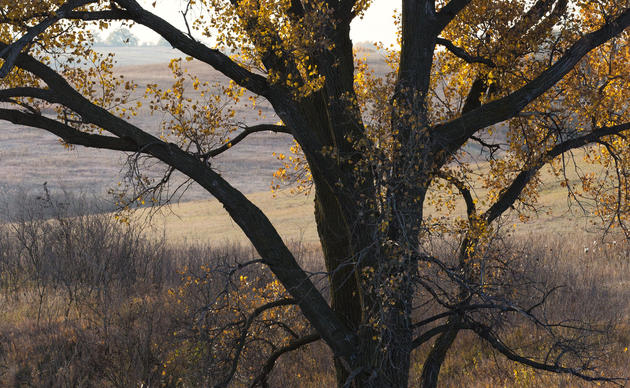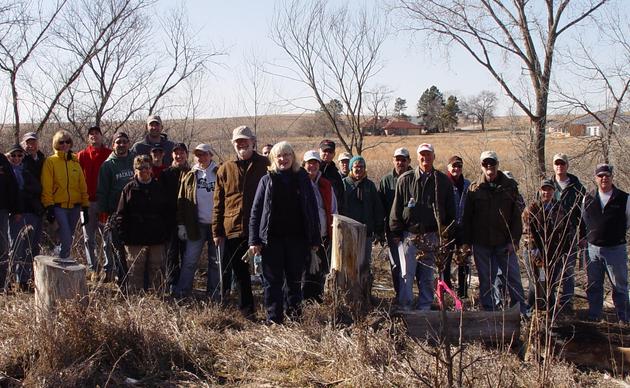For the 120th year, the National Audubon Society is organizing its annual Christmas Bird Count. Between December 14 and January 5, tens of thousands of bird-loving volunteers will participate in counts across the Western Hemisphere. The twelve decades’ worth of data collected by participants continue to contribute to one of only two large existing pools of information notifying ornithologists and conservation biologists about what conservation action is required to protect birds and the places they need. Audubon’s Christmas Bird Count is one of the longest-running wildlife censuses in the world. Each individual count takes place in a 15-mile-wide circle and is led by a compiler responsible for organizing volunteers and submitting observations directly to Audubon. Within each circle, participants tally all birds seen or heard that day—not just the species but total numbers to provide a clear idea of the health of that particular population. “The Christmas Bird Count is a great tradition and opportunity for everyone to be a part of 120 years of ongoing community science,” said Geoff LeBaron, Audubon’s Christmas Bird Count director, who first started leading the community science effort in 1987. “Adding your observations to twelve decades of data helps scientists and conservationists discover trends that make our work more impactful. Participating in the Christmas Bird Count is a fun and meaningful way to spend a winter for anyone and everyone.”
When combined with other surveys such as the Breeding Bird Survey, Audubon’s Christmas Bird Count provides a picture of how the continent's bird populations have changed in time and space over the past hundred years. The long-term perspective is vital for conservationists. It informs strategies to protect birds and their habitat, and helps identify environmental issues with implications for people as well. For example, earlier this year, Science published a study using decades of Audubon Christmas Bird Count data to describe a grim picture: a steady decline of nearly three billion North American birds since1970, primarily as a result of human activities. Christmas Bird Count data have been used in more than 300 peer-reviewed articles.
A brand new feature for this year’s 120th Christmas Bird Count will be “CBC Live,” a crowd-sourced, hemisphere-wide storytelling function using Esri mapping software. This “story-map” will ask users to upload a photo taken during their Christmas Bird Count as well as a short anecdote to paint a global picture of the Christmas Bird Count in real time. Last year, the Count included a record-setting 2,615 count circles, with 1,975 counts in the United States, 460 in Canada and 180 in Latin America, the Caribbean, Bermuda and the Pacific Islands. This was the ninth-straight year of record-breaking counts. In total, 79,425 observers out in the field and watching feeders tallied up over 48 million birds representing more than 2,600 species different species—more than one-quarter of the world’s known avifauna. Approximately 5 percent of the North American landmass was surveyed by the Christmas Bird Count. Last year included two new species for the Christmas Bird Count list of birds seen in the United States: a Little Stint in San Diego and a Great Black Hawk in Portland, Maine.
Beginning on Christmas Day in 1900, Dr. Frank M. Chapman, founder of Bird-Lore-–which evolved into Audubon magazine--proposed a new holiday tradition that would count birds during the holidays rather than hunt them. Conservation was in its beginning stages in that era, and many observers and scientists were becoming concerned about declining bird populations. So began the Christmas Bird Count. 120 years later, the tradition continues and still manages to bring out the best in people and contribute valuable data to the worldwide scientific community.
To sign up for a Christmas Bird Count and ensure your bird count data make it into the official Audubon database, please find the circle nearest you and register with your local Christmas Bird Count compiler on this map here. All Christmas Bird Count data must be submitted through the official compiler to be added to the long-running census. The Audubon Christmas Bird Count is a community science project organized by the National Audubon Society. There is no fee to participate. Counts are open to birders of all skill levels and Audubon’s free Bird Guide app makes it even easier to learn more. For more information and to find a count near you, visit www.christmasbirdcount.org.
The National Audubon Society protects birds and the places they need, today and tomorrow, throughout the Americas using science, advocacy, education, and on-the-ground conservation. Audubon’s state programs, nature centers, chapters, and partners have an unparalleled wingspan that reaches millions of people each year to inform, inspire, and unite diverse communities in conservation action. Since 1905, Audubon’s vision has been a world in which people and wildlife thrive. Audubon is a nonprofit conservation organization. Learn more at www.audubon.org and @audubonsociety.



